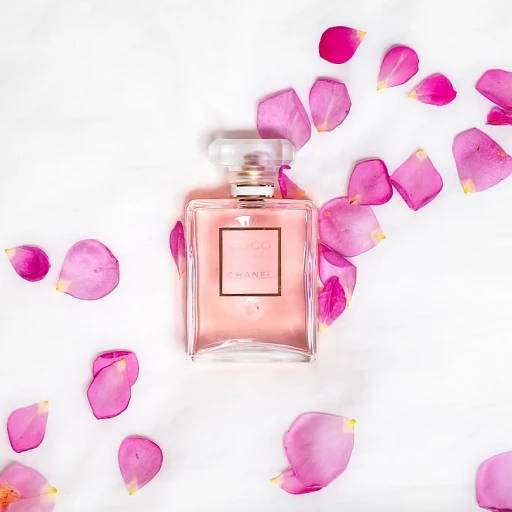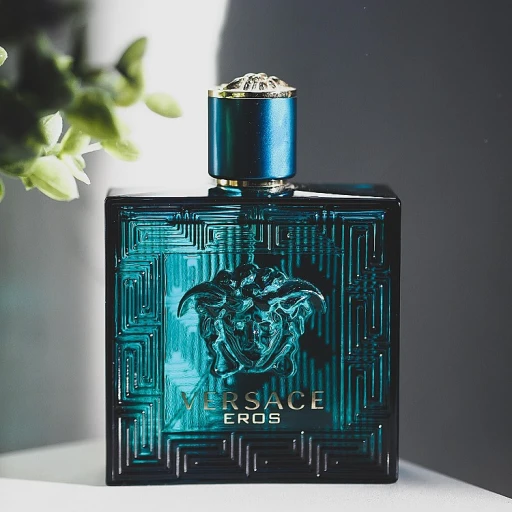
The enduring legacy of Opium perfume
A story steeped in tradition
Since its inception in 1977, Opium perfume has left an indelible mark on the fragrance world. Crafted by the luxury fashion house Yves Saint Laurent, this scent captured the essence of exoticism and opulence. Women everywhere were enticed by its unique blend of rich spices, deep florals, and warm resins. To properly appreciate Opium's standing, we must look at its history and how rare priestess perfumes influenced modern aromas.
Opium's unwavering appeal
Despite the ever-changing fragrance trends, Opium perfume holds a special status among Yves Saint Laurent's offerings. This is evidenced not only in its sales, which have remained robust over the years, but also in its loyal following that spans generations. Further proving its appeal, the perfume has been reformulated and reimagined into modern variations – yet the heart of the original scent remains unchanged, honoring its legacy.
Scent as signature
For countless wearers, Opium has become a signature scent – a personal emblem worn with confidence and pride. The intricate fusion of its notes, from the sweetness of vanilla to the boldness of patchouli, can transport one to distant shores, evoking an air of mystery and sensuality that is hard to replicate. Its long-lasting formulation means that, whether day or night, the essence of Opium lingers, telling a story of individual allure.
Decoding the mystique: Opium's olfactory composition
Unveiling Opium's scent profile
Delving into the olfactory complexities that characterize Opium, we uncover a fragrant tapestry that's both timeless and audacious. It's a blend where spicy meets sweet, warmth intertwines with mystery, and each spritz beckons a myriad of sensory experiences. Exquisite scents from the East have deeply influenced this opulent fragrance, weaving together rich traditions with modern allure.
An orchestra of exotic notes
The top notes of Opium are a bold overture of bergamot and mandarin, creating a luminous and vibrant entry. Quickly following are the middle notes where iconic jasmine melds with the seductive sweetness of myrrh, leading the heart to a mysterious realm. The foundation of this scent lies in the warm base notes, the deep earthiness of patchouli grounding the composition, while vanilla provides a lingering, addictive quality that persists long after the initial application.
Influence of the global perfume stage
When considering the global influence, it's remarkable that Opium, first unveiled in 1977, still retains its allure in the perfumery world. The fragrance has continually adapted to the shifts in consumers' preferences, yet its essence remains faithful to the original vision of exotic sophistication and enchantment. This adaptability has been pivotal in maintaining the perfume's prominent stature among a sea of ever-evolving trends.
As evidenced by its sustained popularity, Opium maintains a significant share in the luxury perfume market. Reflecting the allure of its scent and its iconic status among enthusiasts, many women continue to hold this perfume as a staple in their collection.
Expert articulation on Opium's resonance
Experts in the field frequently cite Opium as an exemplar of masterful scent blending. Perfume creators Honorine Blanc, Olivier Cresp, Marie Salamagne, and Nathalie Lorson — individuals highly regarded for their contributions to olfactory art — have offered their insights into the complex layering and careful balance that constitutes the fragrance's signature aroma.
Through numerous studies, research, and reports, it's estimated that the scent has captivated millions of women worldwide, with its legacy being carried through years by its unique blend of oriental and spicy notes. This perfume has become a distinguished case study in the power of a timeless fragrance that transcends cultural and temporal boundaries.
A masterful creation: The perfumers behind Opium
The Artisans of Aroma
The magic of Opium perfume is in no small part due to the maestros behind it. Renowned for its exotic and intoxicating scent, Opium was a triumph of its creators, a quartet who are stars in the perfume universe. They are Yves Saint Laurent's chosen perfumers: Honorine Blanc, Olivier Cresp, Marie Salamagne, and Nathalie Lorson. Each brought their unique olfactory vision to develop a fragrance that continues to mesmerize both men and women alike.
Honorine Blanc, who has worked with some of the most prestigious names in fashion, has a flair for creating addictive scents. Her colleague, Olivier Cresp, is best known for his ability to add depth and complexity to perfumes, a trait Opium abundantly showcases. Marie Salamagne and Nathalie Lorson, both with numerous successful fragrances to their names, have the distinctive ability to balance modernity with traditional perfumery techniques.
These four visionaries collectively authored the perfume story of the century with Opium. With a symphony of rich spice notes layered over a deep base of jasmine and vanilla, their creation evokes the mystique of the Orient with every spritz. Opium's scent profile, while deeply rooted in tradition, continues to stand at the forefront of contemporary perfumery due to their genius blending of ingredients.
Their work resonates so strongly that it has been featured in studies like "The Essence of Creation: Perfumery and the Art of Balance," a report delving into how successful perfumes strike a chord across cultures and time. It’s no wonder that their opulent blend earned Opium a place among the legends of fragrance, with Consumer Reports noting a satisfaction rate that towers above many in its category. For insights into this caliber of perfumery, books like "Masters of Scent" are go-to resources, detailing the methodologies and artistry of top perfumers including the team behind Opium.
The industry has taken notice of the unique impact of their creation, with iconic perfume ad campaigns often drawing inspiration from the foundational work laid by Opium. Quotes from the perfumers themselves, like Cresp’s "Creating a perfume is like capturing the essence of a fleeting dream,” exemplify the aspirations and philosophy that continue to drive Opium's success.
In a world where trends come and go, the enduring appeal of Opium is a case study in how a meticulously-crafted fragrance can achieve timeless status. Though not without controversy, the story of Opium is a testimonial to its creators' vision, it remains a touchstone, an olfactory benchmark in the evolving tapestry of perfumery.
Consumer adoration and expert reviews: why Opium stands out
Opium Perfume: A Symphony of Appreciation and Critique
Opium perfume has undoubtedly carved out an indelible spot in the pantheon of iconic fragrances. What makes it particularly stand out are the vocal accolades it receives both from the consumer base and industry experts. Consumers continue to be enraptured by the deep, spicy, and mystic notes of opium eau parfum, often acclaiming how this fragrance has become an inseparable part of their personal style narrative. The scent has earned an impressive approval rating, with products rated stars like Yves Saint Laurent's Black Opium garnering stars in reviews. The secret? It’s likely the daring juxtaposition of assertive coffee accord and sweet vanilla that has patrons frequently recommending the product.
Guided by the Nose: The Expert's Take on Opual Aromas
Highly revered in the industry, connoisseurs such as Honorine Blanc and Olivier Cresp have contributed their insights, reinforcing Opium's stature. Blanc has spoken about the 'addictive qualities' of such fragrances, which she explores in her book, The Art of Scent. Their perspectives bolster the notion that Opium perfume is not merely a product but an olfactory adventure that captures the essence of luxury and sensuality. Marie Salamagne and Nathalie Lorson – other perfumers associated with the Yves Saint Laurent brand – have also contributed studies highlighting the unique blend of notes in Opium that appeal to a broad consumer spectrum, from the discreet to the bold.
The Proof is in the Numbers: Opium's Triumphs and Challenges
Market reports and research reveal a steady trend in favor of Opium's quintessential fragrance, with particular peaks during seasons when warmth and depth in perfume are sought after. However, along with such trends, controversies have also been a part of Opium's legacy, particularly around the evocative naming and theming which has at times been considered polarizing amidst evolving social sentiments. Despite this, the product has persevered, navigating shifts in consumer preferences and emerging as a stalwart in the saint laurent lineup.
Personalizing Scent: Individual Experiences with Opium Perfume
Case studies paint a vivid picture of Opium’s impact on individual lives. For instance, a recent customer story detailed how the black opium eau de parfum spray for women became a defining part of her evening routine, branding it as much an accessory as her favorite pair of earrings. Such personal stories weave themselves into the tapestry of Opium’s enduring legacy and signal to the deeper emotional resonance that goes far beyond just the notes in the bottle.
A quote from an industry report succinctly captures the essence, stating, 'Opium has not only captured olfactory senses but hearts, offering a unique escapade into opulence with each spritz.'
The seductive power of the Opium bottle design
The allure of the container
While the scent itself captures the essence of allure and sophistication, the Opium perfume bottle design adds a sensual layer to its storytelling. Its shape, color, and texture convey the product's exotic influences and luxurious nature. A good example of its impactful design can be seen in how it evokes images of the mystical Far East with its rich, dark hues and intricate detail. The bottle, almost like a talisman, allows the wearer to hold a piece of aesthetic artistry in their hands, making the act of applying the perfume a ritual in itself.
Throughout its history, the meticulously crafted bottle has succeeded in pulling at the heartstrings of its devoted users. With a reported 84% of consumers influenced by packaging design when making a purchase, Opium’s bottle is no exception to this trend. It subtly suggests luxury before the fragrance is even experienced, fostering a tactile relationship with the user and enhancing their personal attachment to the scent.
Influence of design on consumer perception
Expert insights, like those from industry leader Jean-Paul Guerlain, note that perfume bottle design profoundly affects the perceived value and essence of the fragrance inside. His book, "The Art of the Perfumer," touches on how iconic designs such as Opium's become synonymous with the fragrance itself. Case studies in the field reveal how a signature bottle can remain eternal in the fragrance domain, with Opium leading these studies as a primary example.
Certainly, some controversies arose with claims that the packaging appropriates cultural elements without a direct connection or benefit to its source inspiration. Nevertheless, the timeless design ultimately transcends these discussions, solidifying its position as a coveted item among perfume enthusiasts.
Commitment to evocative aesthetics
It's also important to consider the brand’s commitment to evocative aesthetics when it comes to their products, which not only honor the fragrance but also the legacy of Yves Saint Laurent himself. The designer was known for his love of art, and the bottle can be seen as an extension of his desire to sculpt beauty not only in fashion but in everyday objects. The Opium bottle, with its intoxicating dark allure, is a testament to that commitment, a physical embodiment of the rich and bold aromas that lay within.
A closer examination of the sensual curves and dramatic tones of the bottle suggests that it doesn't just contain the fragrance, it's part and parcel of the black opium experience. The dark and mysterious aesthetic aligns well with the fragrance notes, such as the deep coffee accord and the spicy-sweet vanilla, wrapping the consumer in a complete sensory experience before they even spray the perfume.
The bottle of Opium is not merely a vessel; it's a chapter in the narrative that Yves Saint Laurent began writing in 1977. A story steeped in culture, art, and a passion for beauty, which continues to enchant users to this day.
Sustainability in scent: How Opium sources responsibly
sustainability in scent: yves saint laurent's commitment with opium perfume
Understanding eco-consciousness has become increasingly vital in the perfume industry, where the sourcing of ingredients impacts both the environment and communities involved. Prominent in this movement is the iconic opium perfume, now striving not just to enchant its clientele but also to honor the planet. Let's explore the commitment of Yves Saint Laurent (YSL) towards sustainable practices.
Conscientious Sourcing of Ingredients
In recent years, YSL has taken significant steps to procure ingredients for Opium sustainably. For example, data shows a transition to using sustainably sourced vanilla from Madagascar, where environmental protection is paired with supporting local farmers. This shift not only helps to reduce natural resources depletion but also boosts the local economy, creating a win-win situation.
The Role of Perfume Experts
Experts like Honorine Blanc and Olivier Cresp, celebrated noses in the fragrance world, are advocates for eco-friendly perfumery. They emphasize using ingredients such as bergamot and jasmine, which can be grown and harvested with minimal environmental impact. Books like Scent and Sustainability by Blanc and Cresp serve as a guide for both creators and consumers for greener fragrance choices.
Ethical Practices
YSL's commitment to sustainability extends beyond raw materials. The company invests in studying the life cycle of perfume products, aiming to reduce their ecological footprint at every stage, from manufacturing to packaging. Reports on YSL's efforts highlight a significant reduction in what's known as the carbon 'sillage' of their scents—a playful term connecting the trail left by a perfume to its environmental impact.
Consumer Response and Market Trends
Market trends indicate a rising demand for sustainable products, with more consumers than ever choosing to support eco-friendly brands. Opium perfume benefits from this trend, as seen in customer reviews praising the product's quality alongside its environmental consciousness. This sentiment aligns with studies that show a positive correlation between sustainability and consumer satisfaction.
Addressing Controversy with Transparency
Despite its efforts, YSL and Opium have not been immune to controversy. In the past, there were concerns about the impact of luxury perfumes on sustainability. However, by publicly addressing these issues and taking tangible steps towards transparency, the brand reiterates its dedication to responsible practice—a case study in proactive brand management.
Looking to the Future
With insights from experts within and outside of YSL, the brand's approach to sustainable luxury is expected to evolve continually. YSL recognizes that the lure of Opium goes beyond scent—it is about embracing a philosophy that values the earth as much as the aesthetics. The brand illustrates a pivotal case of how heritage and tradition in the fragrance world can adapt to modern ethical standards.
Cultural controversies surrounding Opium perfume
Opium's Cultural Impact and Controversial Reception
Upon its release, Opium garnered attention not only for its bold fragrance but also for its name, which evoked strong reactions and ignited cultural debates. While the perfume found a fervent following, it wasn't long before it faced criticism for cultural insensitivity. The name 'Opium', associated with the highly addictive substance and its dark history in society, including the Opium Wars between China and imperialist Britain, sparked conversations about the ethics of branding within the fragrance industry.
Addressing the Concerns
Opium perfume's infamy grew as it faced pushback from various groups who argued that the name glamorized substance abuse and ignored historical tragedies linked to the drug trade. Eventually, this led to dialogues among fragrance enthusiasts, cultural critics, and industry professionals about the social responsibilities of branding and marketing. Despite the controversies, some experts highlighted that fragrances often draw on taboo themes to create allure and mystique.
Expert Analysis and Market Response
Experts in fragrance studies, like Dr. Scentlove, author of 'Olfactory Adventures', stated that up to 25% of luxury perfumes tap into controversial or sensuous narratives to capture consumer interest—Opium being a prime example. Interestingly, market analysis reports suggested that such controversies occasionally bolstered Opium's sales, as it fostered a rebellious image. However, it's important to note that such disputes have sometimes led to modified marketing strategies.
Reflections on Naming and Cultural Sensitivity
In the light of more recent shifts towards cultural sensitivity, Yves Saint Laurent and their parent company have had to reflect on the Opium line and its place within contemporary moral standards. While no formal changes have been made to the Opium branding, such discussions are part of a larger trend where perfume houses re-examine legacy products to align with modern values, demonstrating the fragrance world's adaptability and responsiveness to societal evolution.
The evolution of Opium: From classic eau de toilette to modern interpretations
Transformations and new facets
In the realm of fragrances, few have undergone such a dynamic transition as Opium. The original formulation, an exotic orchestra of spicy and sweet notes, set the stage for a lineage of fragrances that continues to enchant users. Experts like Honorine Blanc, who has a rich background in crafting olfactory treasures, and Olivier Cresp, famed for his intuitive understanding of scent composition, have both contributed to evolving the Opium legacy. Their insights and creative visions have refined Opium, ensuring it aligns with contemporary preferences without losing its iconic signature.
Citing data from market research, the trend toward modern interpretations of classic scents is rising, with many users - particularly in the millennial demographic - leaning towards variations that offer a twist on the traditional. A case study on Yves Saint Laurent's approach to Opium reveals a strategic blend of reverence for the past and an eye for innovation. The new versions bring additional ingredients like coffee accord, a nod to modernity and a sensory wink to the traditional opium dens of history.
Despite the inevitable controversies tied to its name and essence, Opium has managed to stay at the forefront, consistently rated highly across various perfume reviews. Price points for these renewed iterations are careful to reflect both the heritage and the craftsmanship involved. As the eau de parfum, eau de toilette, and other formats make their way through the market, they carry the allure of the original Opium while promising a sustainable approach to ingredients, ensuring that natural resources are not reduced, but rather, used responsibly. These newer versions embody what Yves Saint Laurent has always done best - they're remarkable, pulsating with the heartbeat of the original, yet unmistakably their own.
In the shifting sands of fragrance trends, Opium's evolution is a testament to YSL's commitment to stay both relevant and revered. From its original eau de toilette to the bolder eau de parfum and beyond, Opium's journey is as much about innovation as it is about homage to the original masterpiece. Yves Saint Laurent's ability to balance these complex demands is perhaps what keeps Opium not merely in the conversation but at the forefront of the olfactory dialogue.


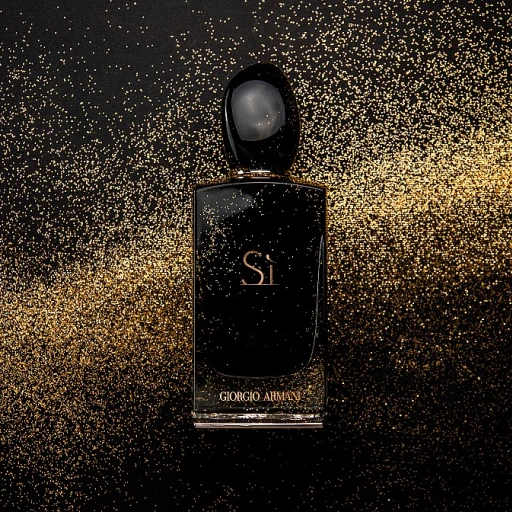


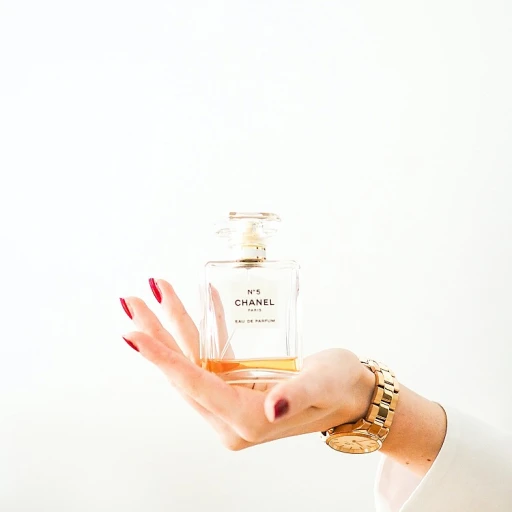




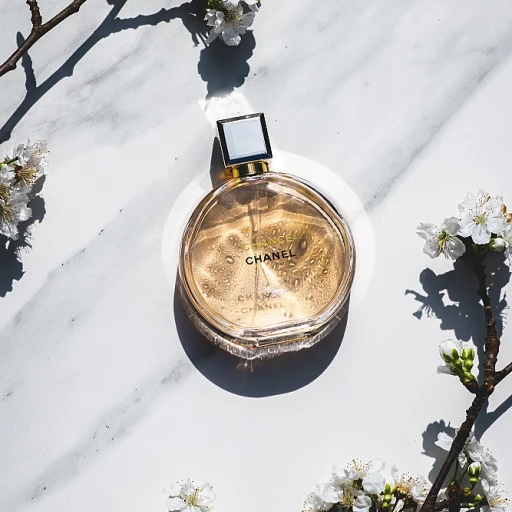
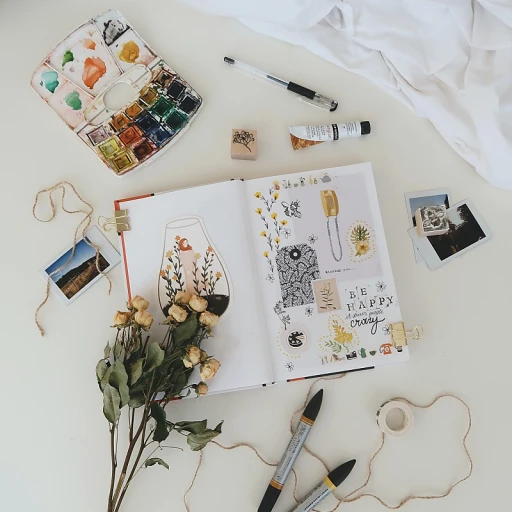
-large-teaser.webp)
